Why Do Brides Wear White? Exploring the Tradition and Its Meaning
So, you’re curious about why brides often wear white on their wedding day. It’s a question that seems simple, but it carries a lot of history and cultural significance. The tradition of wearing a white wedding dress can be traced back to Queen Victoria. In 1840, she chose a white gown to marry Prince Albert. Before this, brides wore a variety of colors, but the Queen’s choice set a trend that would last for centuries.
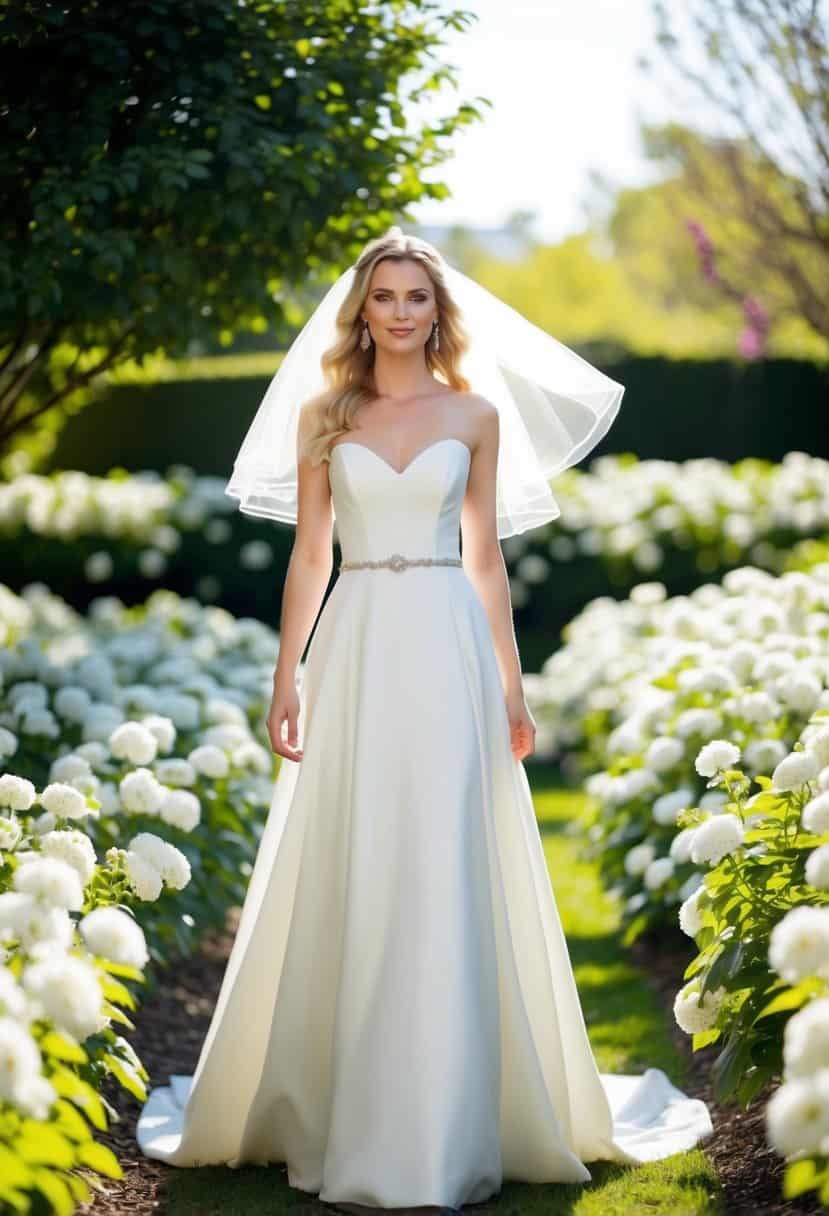
You’re not alone if you think this tradition is interesting. The color white has long been associated with purity and virtue in many societies, which played into why it became popular for wedding dresses. Over time, the white gown became a symbol of a dream wedding, especially in Western cultures. These dresses are often seen in fairy-tale weddings and are a staple in many bridal shops.
While white is traditional, remember that wedding traditions differ around the world, and not all brides wear white. Some people choose colors that have special meanings in their cultures. No matter the color, weddings are all about celebrating love, and that’s what truly counts. If you’re planning a wedding, feel free to make it as unique as your love story.
Historical Origins of White Bridal Wear

Brides wearing white is a custom with fascinating roots. Key figures like Queen Victoria have influenced this trend, making it popular in many cultures. Some may think white was always traditional, but the past reveals a more varied history of bridal wear.
Queen Victoria’s Influence
In 1840, Queen Victoria set a trend that changed bridal fashion forever. She wore a white wedding gown when she married Prince Albert. This choice wasn’t just about fashion. It also helped promote Honiton lace, which supported a struggling British industry at the time.
Her white gown was significantly photographed and publicized, inspiring many brides to follow suit. Queen Victoria’s choice became a symbol of purity and elegance. Her influence was so strong that the white wedding dress became widely popular and is still associated with weddings today. You might notice that weddings often focus on traditional elements, with brides choosing white due to this historical influence.
White Gowns Before Victoria
Before Queen Victoria’s time, white gowns were not the standard for weddings. In fact, brides often wore dresses in various colors, including blue, red, and even black. White was occasionally worn but wasn’t tied to purity or tradition like it is now.
Anne of Brittany is one notable example of a bride wearing white. She wore white during her marriage to Louis XII of France in 1499. However, it wasn’t until Queen Victoria’s wedding that the white dress gained popularity and became a staple in wedding fashion worldwide.
This diverse history shows that bridal fashion has evolved, influenced by societal trends and personal choices of prominent figures.
Symbolism of White in Wedding Attire
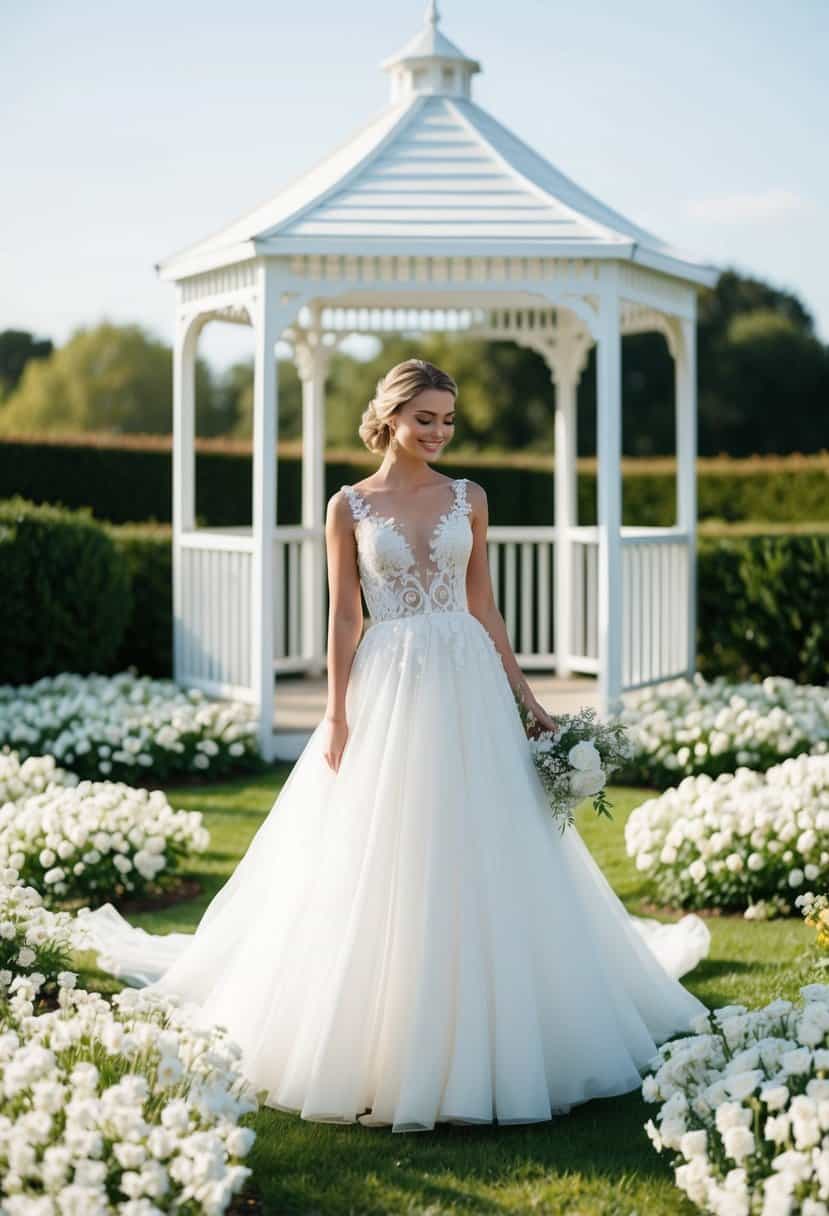
The white wedding dress is rich with symbolism, often associated with themes like purity and joy. These associations have deep roots in cultural traditions and perceptions.
Purity and Virginity
White is often linked to purity and virginity, making it a popular choice for brides. Historically, wearing a white wedding dress symbolized the bride’s innocence and her new start with her partner. This tradition gained popularity in the 19th century when Queen Victoria wore a white gown for her marriage to Prince Albert. Such symbolism captivated many and led to white becoming a favorite for weddings in the Western world.
In some cultures, the emphasis on purity has lessened, and white is more about personal preference. However, the traditional view still holds strong in many places, where the white dress represents both purity and the bride’s commitment to her partner’s family.
White’s Association with Joy
White isn’t just about purity; it also represents joy and celebration. Many choose a white dress to embody the happiness and positivity of the occasion. This cheerful connotation of white complements the festive mood of weddings, making it a suitable choice for such a significant day.
In some cultures, white also signifies a new beginning, aligning perfectly with the idea of starting a new life together. The joy associated with wearing white focuses on the celebratory nature of weddings, turning it into a symbol of hope and new possibilities for the future.
Cultural Significance and Variations
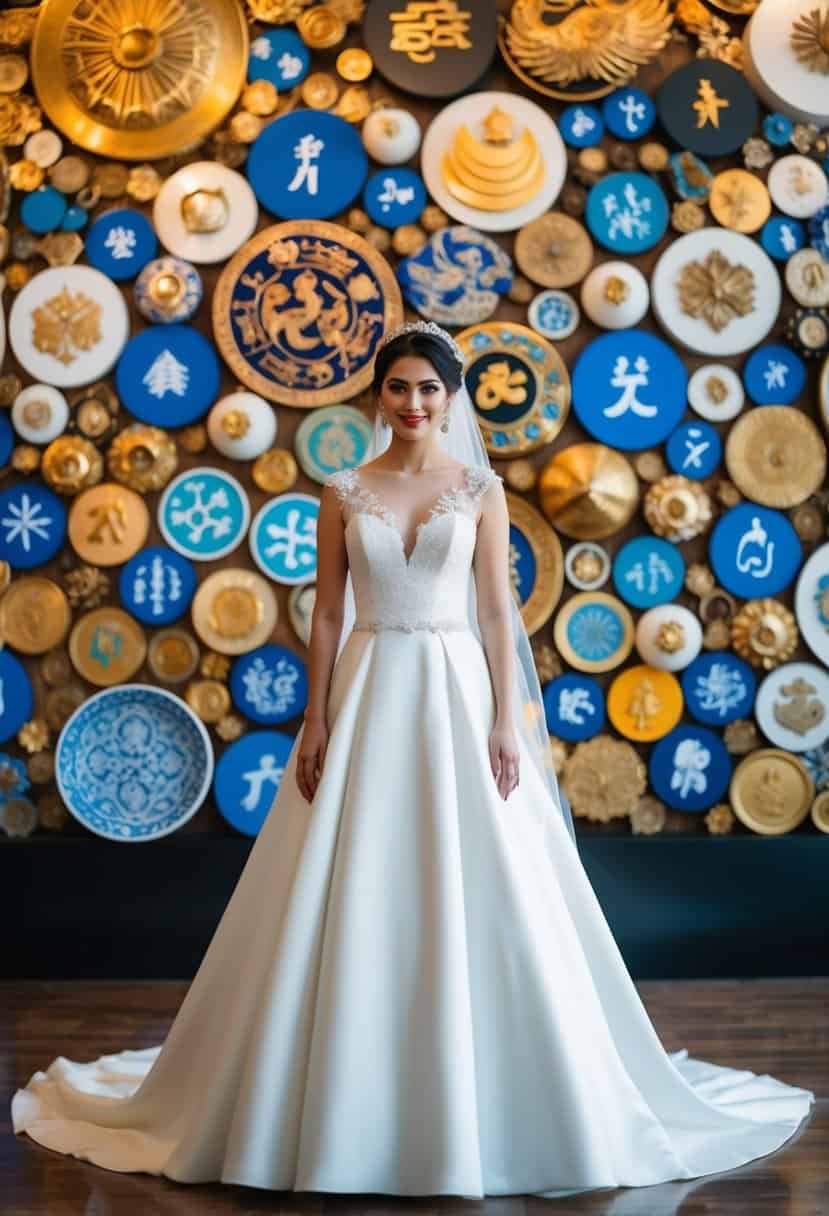
Brides often choose white dresses for their weddings, but this choice comes from different traditions and meanings around the world. In Western cultures, the white wedding dress has a specific history, while in other cultures, white can symbolize various things.
Western Weddings
In Western weddings, the white dress is a symbol of purity and elegance. This trend started in the 19th century when Queen Victoria of England wore a white gown to her wedding. Before that, brides wore dresses in all sorts of colors. The white wedding dress became linked to dreams of a fairy-tale wedding and soon spread to places like the United States and Europe, becoming a part of traditional wedding traditions.
A big, white wedding often represents more than just the dress; it’s an image of romance and a special celebration. Many people see it as an essential part of the perfect wedding day. The choice of white also reflects a certain standard of beauty in Western culture, which has continued into modern times.
White in Different Cultures
In many parts of the world, white holds different meanings that aren’t always linked to weddings. For example, in some Eastern cultures, white is often associated with mourning instead of celebration. This illustrates how the symbolism of white can shift dramatically across different societies.
Brides in non-Western cultures may not always choose white for their weddings. In India, for instance, red is more traditional, symbolizing good luck and prosperity. White is worn during somber occasions, so a bride rarely wears white for her wedding day. Understanding these cultural variations helps you appreciate the diverse traditions that exist around the concept of a white wedding dress.
Contemporary Context of White Dresses
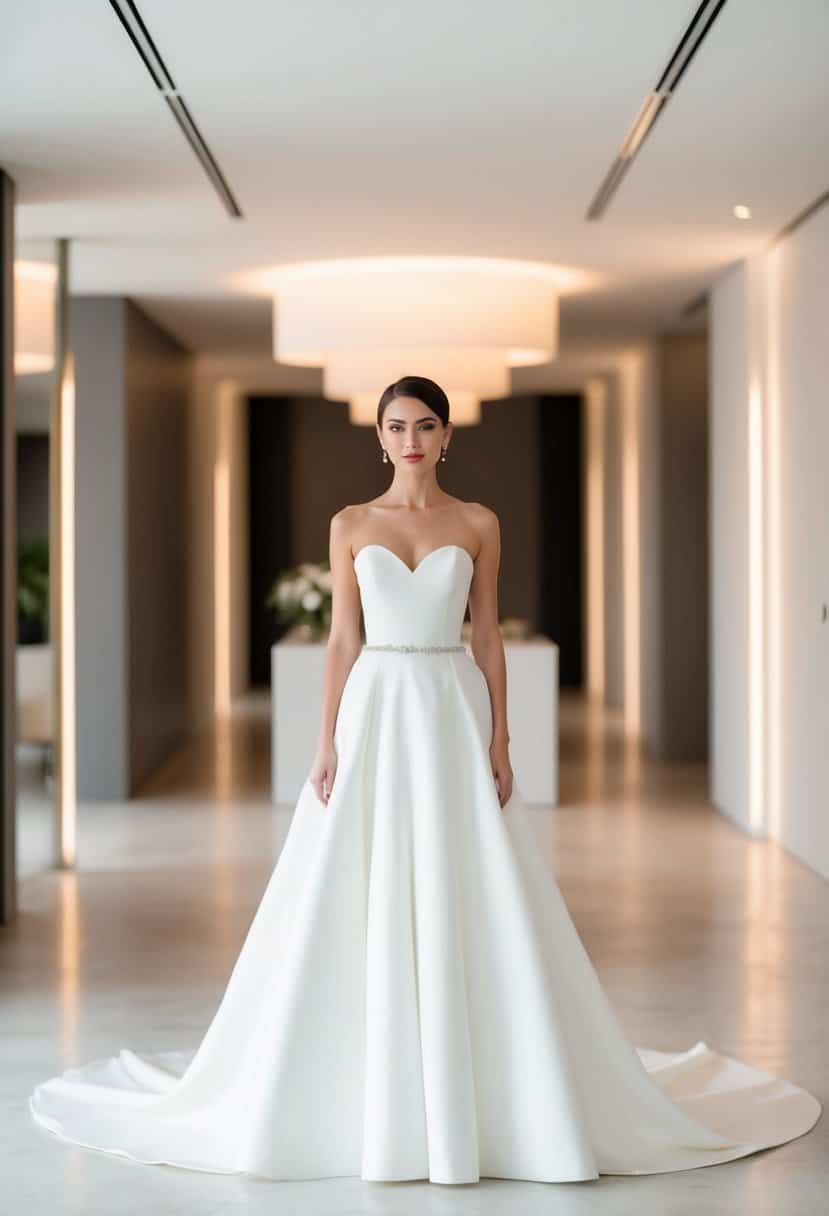
In today’s world, the choice of a white wedding dress has evolved with new meanings and styles. Brides now have various reasons for choosing white, ranging from personal aesthetics to cultural influences.
Modern Interpretations
White wedding dresses today symbolize more than just tradition. They can represent personal purity, a fresh start, or a nod to cultural heritage. While historical reasons for wearing white involved wealth or symbolism, modern brides might choose white for its clean, fresh look or to align with personal beliefs.
White dresses now allow brides to express themselves without sticking strictly to historical interpretations. The white wedding gown can be seen worn by brides of any gender, as anyone can wear what makes them feel special and true to themselves, as noted in this article about white wedding dress affirming gender expression.
Fashion and Personal Choice
Today, you can find wedding dresses in countless designs and fabrics, making the choice of a white dress a personal fashion statement. Whether you prefer lace, silk, or satin, the options are vast. Fashion designers often use white dresses to celebrate and highlight individuality, recognizing that each bride has her own style preferences.
Choosing a white wedding gown can also be about fitting into a theme or achieving an elegant look. Some brides wear white as a way to match a more traditional aesthetic, while others might choose it because it simply suits their personality. The evolution of bridal fashion means that the choice of a white dress is as much about personal taste as it is about tradition.
Additional Wedding Wardrobe Elements
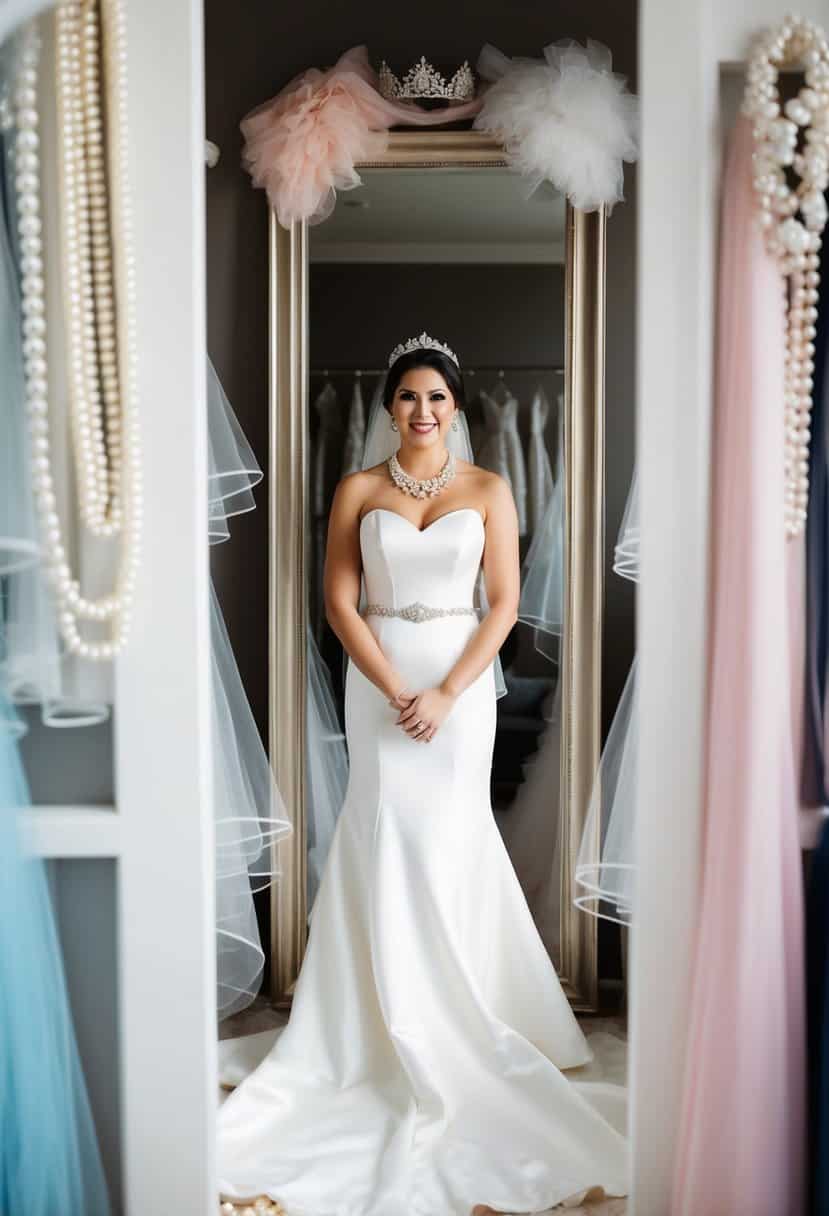
In addition to the bridal gown, several key elements contribute to the wedding attire. Each piece has its own history and symbolism, making the wedding ensemble rich with meaning.
Veil and Its Significance
The veil is a classic bridal accessory. It has been worn by brides for centuries and carries deep symbolism. Originally, veils were believed to protect brides from evil spirits, hiding their face to keep them safe. Over time, this practice has evolved.
In modern weddings, veils are often seen as an elegant accessory that adds to the bridal look. They come in various lengths, from short birdcage veils to long cathedral veils. Some brides choose veils adorned with lace, crystals, or embroidery to match their gown. When you choose a veil, consider what style and length best complement your dress and personal style.
Accessory Symbolism
Wedding accessories each hold their own special meanings, adding layers to your wedding day. The bouquet, often features flowers like orange blossoms, represents beauty and abundance. Orange blossoms, in particular, are symbols of fertility and pure love.
The garter is another traditional piece. It’s often used in the garter toss tradition, and it’s a fun part of many receptions. Sometimes, it’s meant to bring good luck.
Other accessories, like jewelry or shoes, can also reflect personal significance. They might be heirlooms gifted by family or selected to coordinate with the wedding theme. Consider choosing accessories that not only enhance your look but also carry personal or cultural meaning for your wedding day.





